Melons are one of my favorite crops to grow, and over the years, I’ve learned through trial and error what works best for a bountiful harvest. There’s nothing quite like the satisfaction of picking a ripe, fragrant melon straight from the vine, knowing you nurtured it from seed to fruit. Whether you’re growing classic muskmelons (cantaloupes), honeydew melons, or winter melons, I’ll share firsthand tips that have helped me successfully cultivate these delicious fruits.
Summer Melons vs. Winter Melons
Melons fall into two main categories:
- Summer melons (like cantaloupe, honeydew, and watermelon) ripen in warm weather and are best eaten fresh.
- Winter melons (such as Casaba, Crenshaw, and Piel de Sapo) take longer to mature and have thicker rinds for extended storage.
Through experience, I’ve found that summer melons thrive best when given ample warmth and plenty of airflow, while winter melons require extra patience and consistent feeding for their extended growing period.
👉 Related: Summer Melons vs Winter Melons: Know the Difference
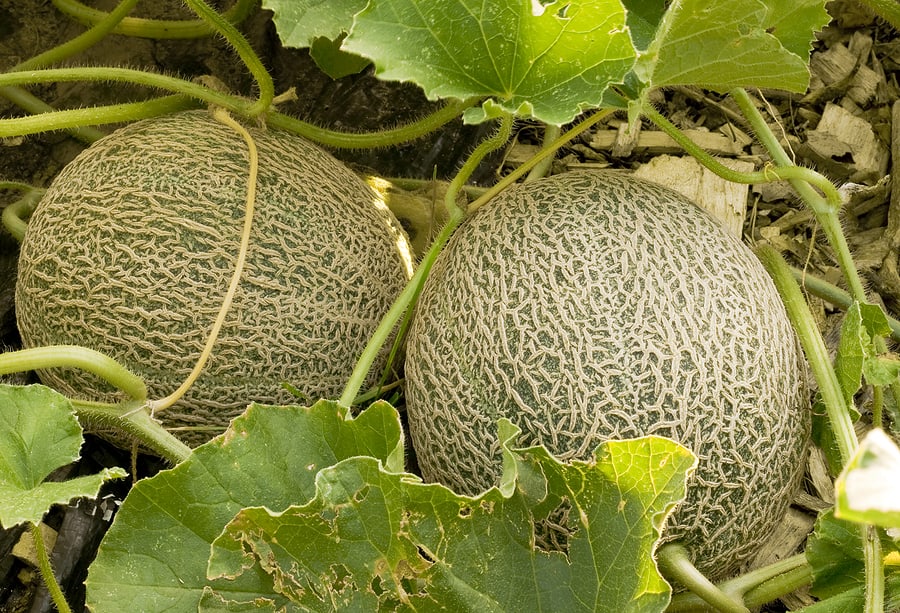
The melons are tender, warm-weather plants. Melons grow best in very warm to hot weather summer regions. Melons are long, trailing annuals that belong to the cucumber and watermelon family.
Melon Quick-Growing Tips
- Choose a sunny location with well-draining, rich soil—my best crops have always come from areas with at least 8 hours of direct sunlight.
- Pre-warm the soil with black plastic or row covers if planting early—this simple trick has given my plants a two-week head start.
- Space plants properly to prevent disease and improve air circulation—I learned this the hard way when my first melon patch succumbed to powdery mildew due to overcrowding.
- Water consistently but avoid wetting the leaves to prevent fungal diseases.
- Support climbing varieties with trellises or stakes to save space and reduce fruit rot—I had my first success with vertical growing using an old cattle panel as a trellis.
- Harvest when fruits develop a fragrant aroma and easily detach from the vine.
Where to Plant Melons
Melons thrive in warm, sunny conditions with at least 8 hours of direct sunlight per day. They require loamy, well-draining soil with a pH between 6.0 and 6.8. I’ve had the best results growing melons in raised beds, which improve drainage and soil warmth, preventing issues like root rot that I encountered in low-lying areas.
👉 Related: Best Soil and Location for Growing Melons
Melon Planting Time
Melons are heat-loving plants and should be planted when soil temperatures reach at least 70°F (21°C). One year, I mistakenly planted too early, and the cold soil stunted my seedlings. Now, I wait until my soil thermometer confirms the right temperature before sowing.
Pre-Warm the Soil for Melons
To get an early start on the season, use black plastic mulch or floating row covers to raise soil temperatures. This method also helps suppress weeds and retain moisture. I’ve used this technique for years and noticed a dramatic improvement in early melon growth.
👉 Related: When to Plant Melons for the Best Harvest
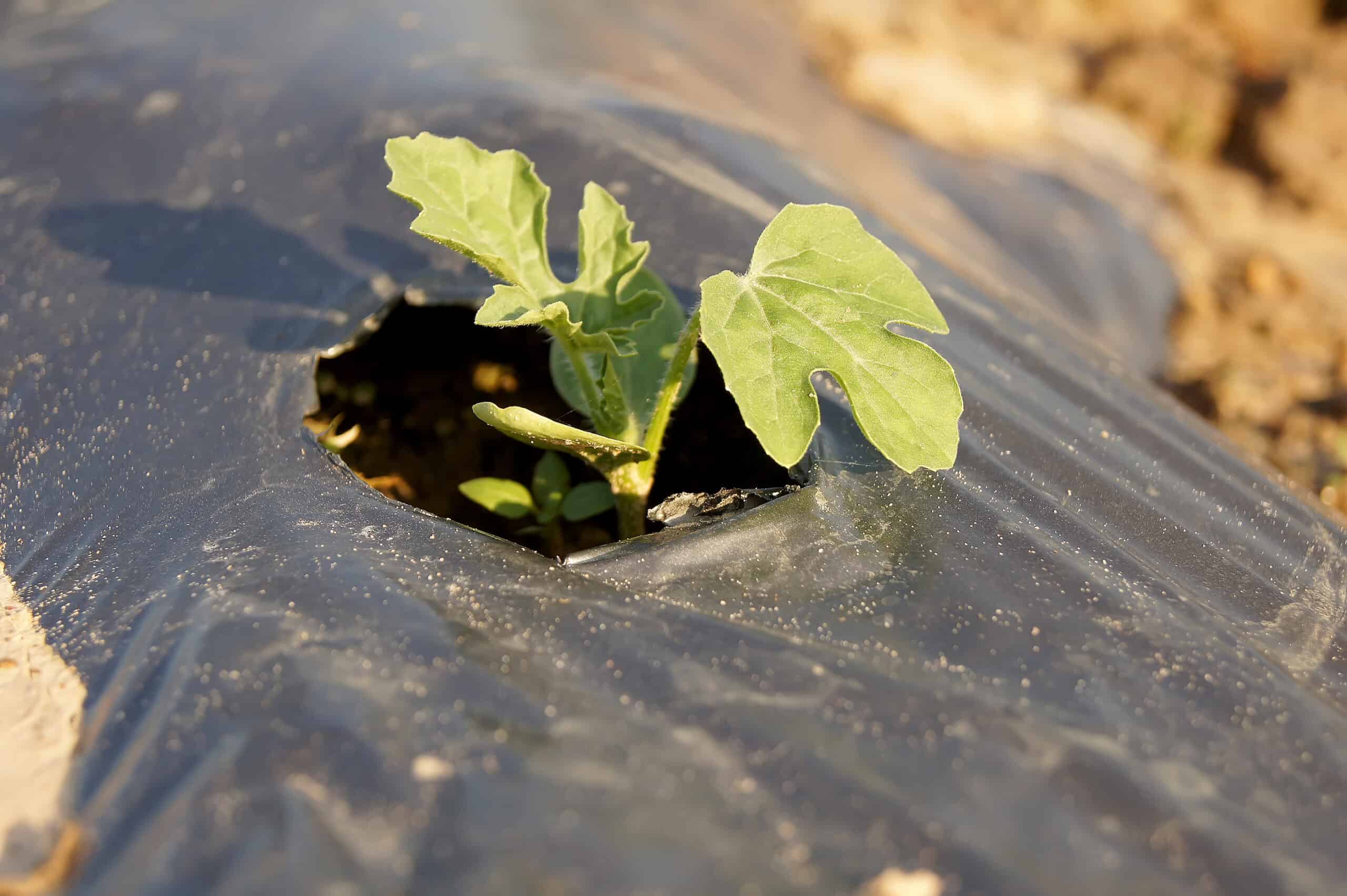
Planting and Spacing Melons
- Direct Seeding: Sow seeds 1 inch deep in groups of 2-3 seeds, spaced 24-36 inches apart.
- Transplants: Space young plants 3 feet apart to allow for vine spread.
- Rows: Maintain at least 4 feet between rows to accommodate sprawling vines.
From experience, giving melons extra space reduces disease pressure and makes harvesting easier. In one crowded planting, I lost multiple fruits to rot simply because the vines were too tangled to check properly.
👉 Related: Planting and Spacing Melons Step-by-Step
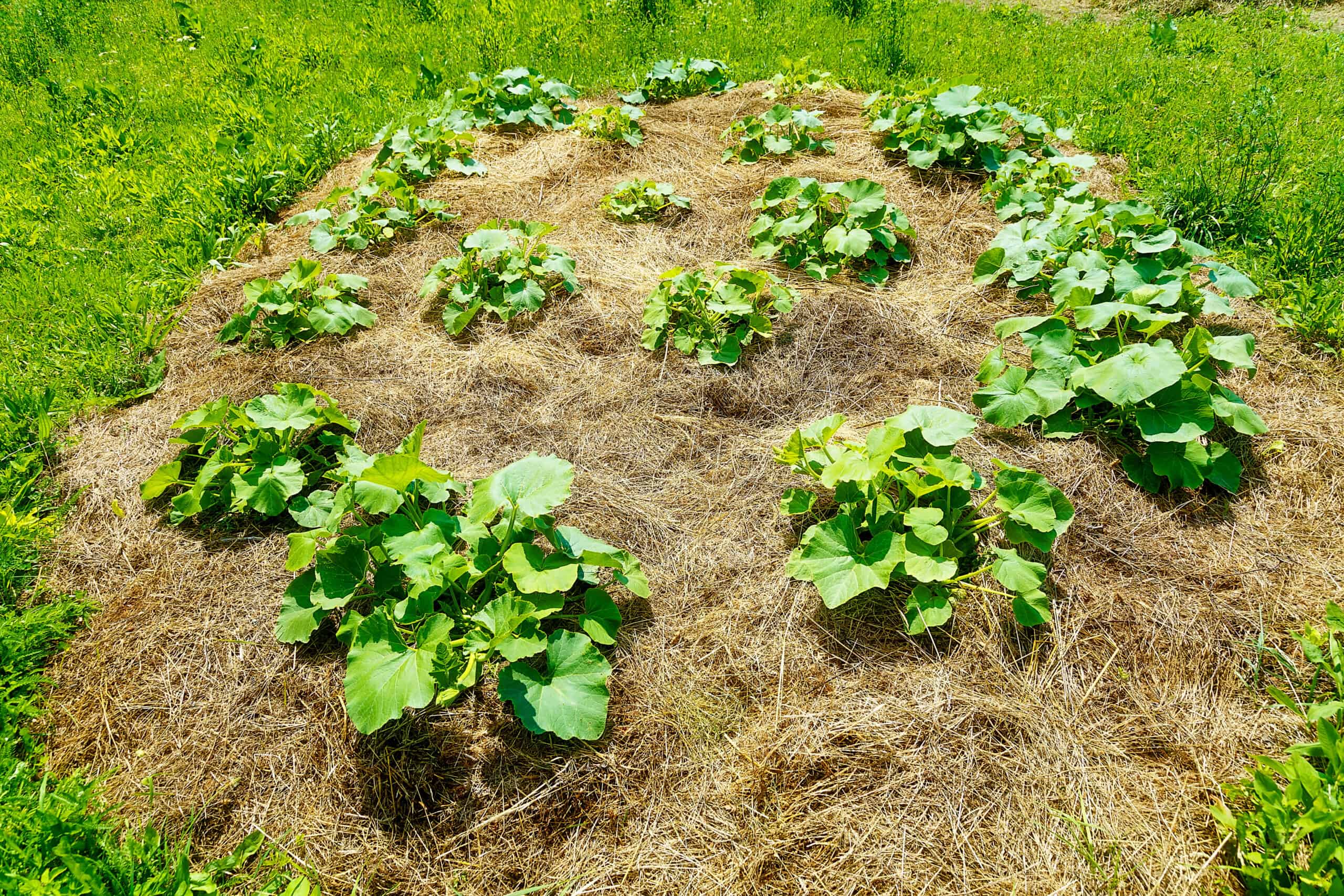
Growing Melons on Mounds or Hills
Planting melons on slightly elevated mounds (6-12 inches high) improves drainage and prevents root rot. Each mound should have 2-3 plants spaced evenly apart. I’ve found this especially helpful in clay-heavy soil, where poor drainage can cause melons to struggle.
👉 Related: Growing Melons on Mounds and Hills: A Proven Method for Stronger Plants and Sweeter Fruit
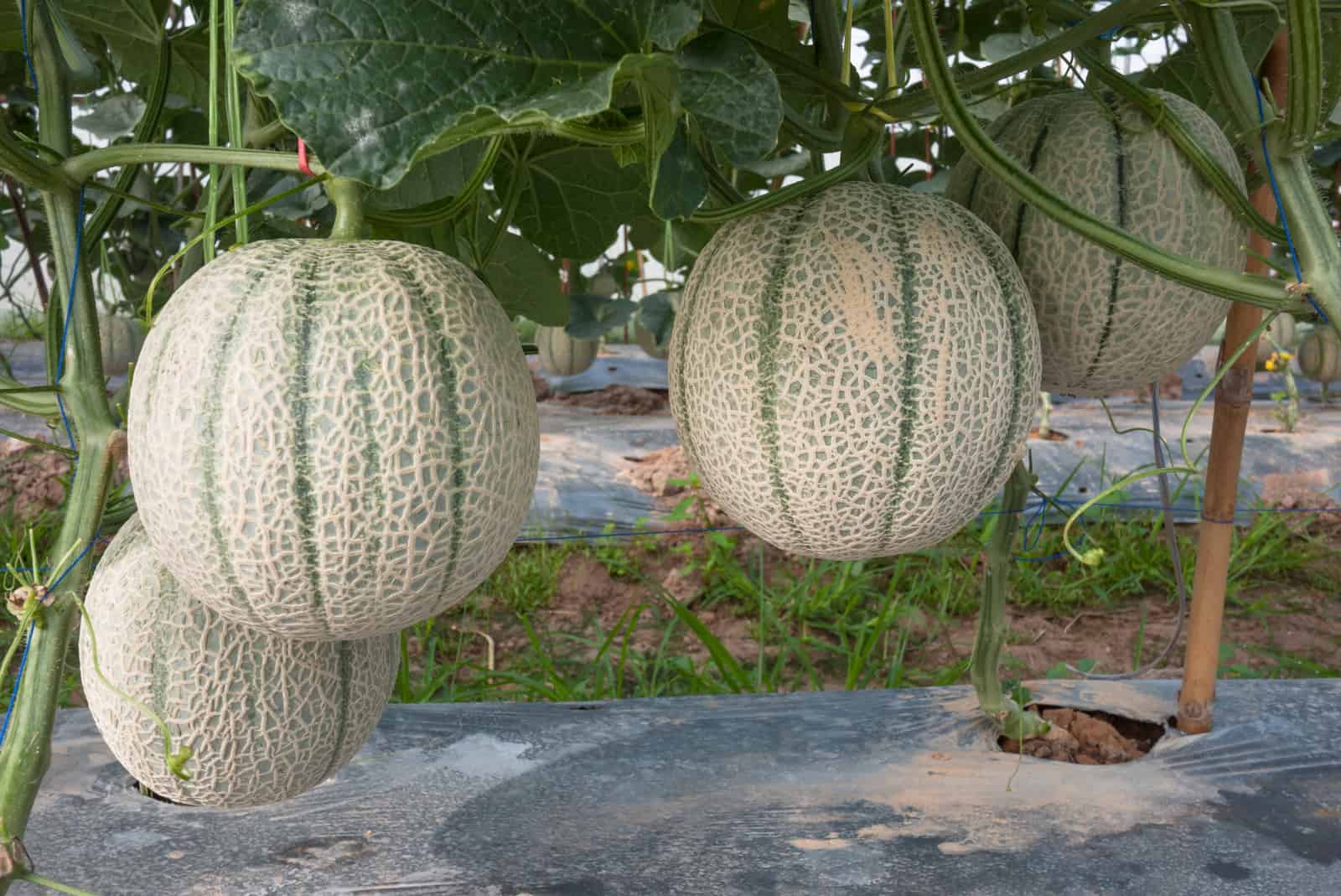
Growing Melons on Vertical Supports
Trellising melons saves space and improves air circulation, reducing the risk of disease. Use sturdy trellises and sling supports (such as netting or fabric) to support heavy fruit. I experimented with this method for the first time with sugar baby watermelons, and the results were fantastic—no ground rot, and they ripened evenly!
👉 Related: Growing Melons Vertically: Save Space and Boost Harvests
Growing Melons in Containers
Melons can be successfully grown in large containers (at least 5 gallons) with well-draining soil. Compact or bush varieties, such as ‘Minnesota Midget’, are ideal for container growing. I once grew a single cantaloupe vine in a whiskey barrel, and it produced two perfect melons!
👉 Related: Melons in Small Spaces: Container Growing Made Easy
Melon Companion Plants
Good companion plants for melons include:
- Corn and sunflowers for natural windbreaks
- Nasturtiums and marigolds to deter pests
- Radishes to repel cucumber beetles
I’ve had great success pairing melons with radishes to deter beetles—a natural and effective pest control method.
Watering Melons
- Provide 1-2 inches of water per week, adjusting for rainfall.
- Use drip irrigation or water at the base to keep leaves dry and prevent mildew.
- Reduce watering as fruit ripens to concentrate sweetness—this has made a noticeable difference in the flavor of my melons.
👉 Related: Watering and Feeding Melons for Maximum Sweetness
Feeding Melons
- Mix compost or aged manure into the soil before planting.
- Apply a balanced fertilizer (10-10-10) when vines start growing.
- Once flowering begins, switch to a low-nitrogen fertilizer to promote fruiting.
Through trial and error, I’ve found that over-fertilizing with nitrogen results in lush vines but few melons. Switching to phosphorus-rich feed at the right stage makes all the difference.
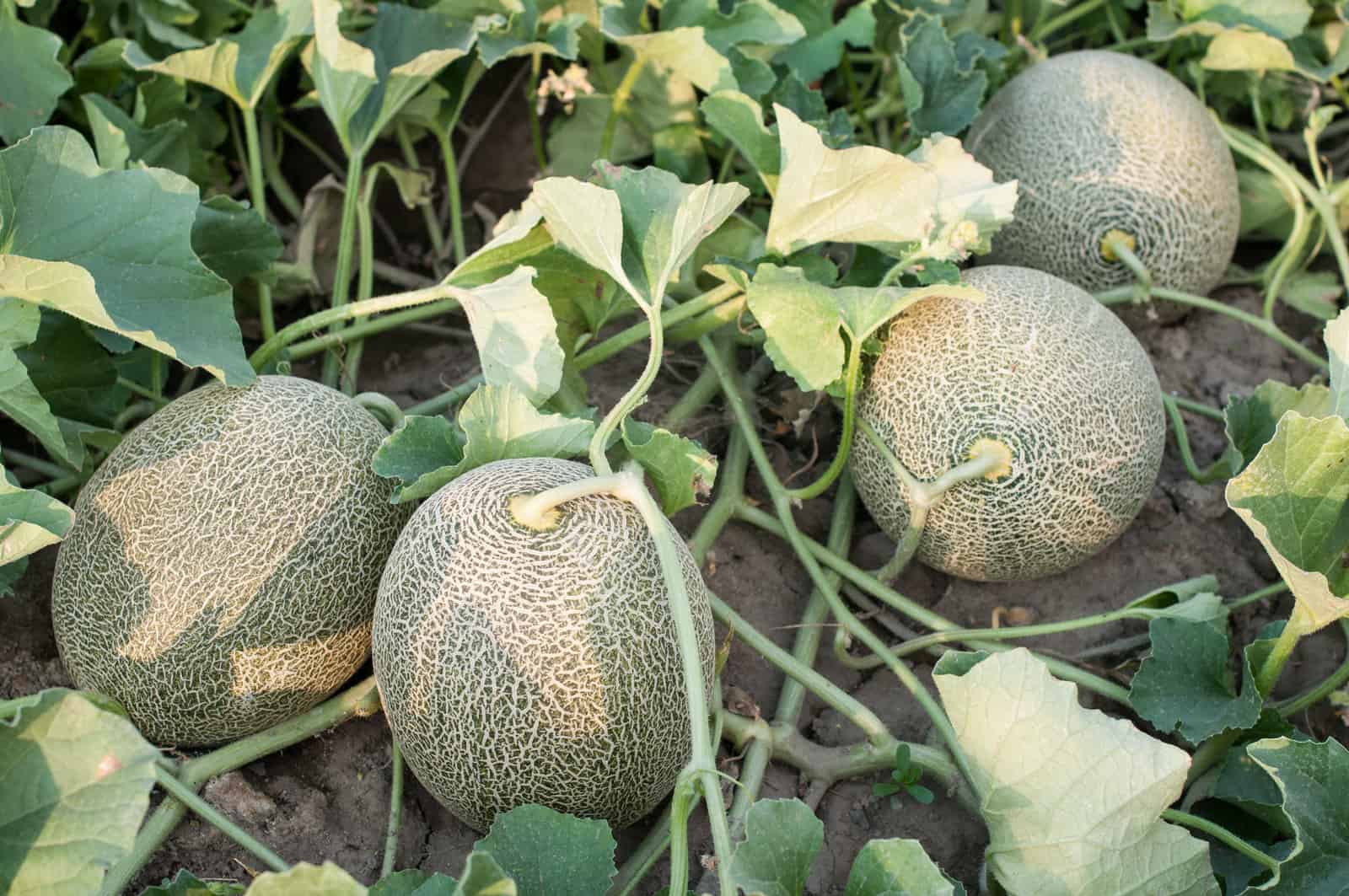
Caring for Melons
- Mulch around plants to retain moisture and prevent weeds.
- Pinch off excess flowers to direct energy into fewer, larger melons.
- Rotate crops yearly to prevent soil-borne diseases.
👉 Related: Caring for Melons Through the Season: A Practical Guide
Melon Pollination
Melons rely on bees for pollination. To improve fruit set:
- Avoid using pesticides that harm pollinators.
- Hand-pollinate using a soft brush if necessary, transferring pollen between male and female flowers.
I’ve hand-pollinated melons before when bee activity was low, and it made a noticeable difference in fruit production.
👉 Related: Melon Pollination: How It Works and When to Lend a Hand
Melon Pests and Diseases
I’ve battled melon pests like aphids and cucumber beetles firsthand. The best organic methods I’ve used include:
- Aphids – Controlled with insecticidal soap or ladybugs.
- Cucumber beetles – Hand-picking and using row covers.
- Squash bugs – Removing eggs and applying neem oil.
👉 Related: Melon Pests and Diseases: Identification and Control

Harvesting Melons
Signs of ripe melons:
- Muskmelons: Develop a strong aroma and slip from the vine easily.
- Watermelons: Tendrils near the stem dry out and the underside turns yellow.
- Honeydew & Winter Melons: Skin becomes dull, and a slight softness appears at the blossom end.
One trick I use is the thump test—a deep, hollow sound usually means the melon is ready.
👉 Related: How to Tell When Melons Are Ripe
Storing and Preserving Melons
- Store fresh melons in the refrigerator for up to 2 weeks.
- Freeze melon chunks for smoothies and sorbets.
- Dehydrate melon slices for a chewy, candy-like snack.
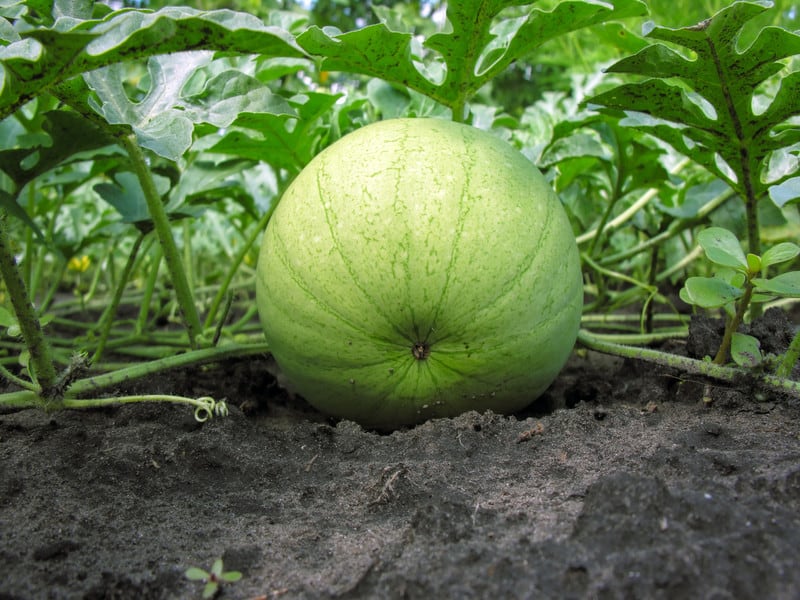
Tips from My Garden
Growing melons is a gratifying experience that results in delicious, homegrown fruit. By applying the methods I’ve learned over the years, you can enjoy a successful melon harvest. Check out my detailed guides on melon pests, pollination, and storage techniques to refine your growing skills further!
Melons Overview: The Ultimate Guide to Growing Melons: From Planting to Harvest
Watermelons: How to Grow Watermelons from Seed to Harvest: Ultimate Guide for Sweet, Juicy Success
Related Posts:
Planting & Growing Basics
- When to Plant Melons for the Best Harvest
- Best Soil and Location for Growing Melons
- Planting and Spacing Melons Step-by-Step
- Growing Melons on Mounds and Hills: A Proven Method for Stronger Plants and Sweeter Fruit
Care & Maintenance
- Watering and Feeding Melons for Maximum Sweetness
- Caring for Melons Through the Season: A Practical Guide
- Melon Pollination: How It Works and When to Lend a Hand
- Melon Pests and Diseases: Identification and Control
Space-Saving Techniques
- Melons in Small Spaces: Container Growing Made Easy
- Growing Melons Vertically: Save Space and Boost Harvests
- Trellising Cantaloupes: Why and How
Ripeness & Harvesting
- How to Tell When Melons Are Ripe
- How to Know When Cantaloupes Are Ripe: Slip Stage and Other Signs
- The Gardener’s Guide to Harvesting and Storing Melons for Peak Flavor
Melon Types & Varieties
- Summer Melons vs Winter Melons: Know the Difference
- Growing Gaila, Honeydew, and Crenshaw Melons
- Best Cantaloupe Varieties for Home Gardens
Enjoying the Harvest
More how to grow articles:
Learn how to plant, grow, and harvest your favorite vegetables. Click below for all you need to know.
- Artichoke
- Arugula
- Asparagus
- Beans, Snap
- Beets
- Broad Beans
- Broccoli
- Brussels Sprouts
- Cabbage
- Cantaloupe — Melons
- Cardoon
- Carrots
- Cauliflower
- Celeriac
- Celery
- Chard
- Chayote Squash
- Chickpeas
- Chicory
- Chinese Cabbage
- Collards
- Corn Salad
- Corn, Sweet
- Cresses
- Cucumbers
- Eggplant
- Endive and Escarole
- Fava Beans
- Florence Fennel
- Garbanzo Beans
- Garlic
- Horseradish
- Jerusalem Artichoke
- Kale
- Kohlrabi
- Leeks
- Lettuce
- Lima Beans
- Melons
- Mizuna
- Mustard Greens
- New Zealand Spinach
- Okra
- Onions
- Parsnips
- Peanuts
- Peas
- Peppers
- Potatoes
- Pumpkins
- Radicchio
- Radishes
- Rhubarb
- Rutabaga
- Salsify
- Shallots
- Sorrel
- Southern Peas
- Soybeans
- Spinach
- Squash, Summer
- Squash, Winter
- Sunchokes
- Sweet Potato
- Swiss Chard
- Taro
- Tomatillo
- Tomatoes
- Turnips
- Watermelon
- Zucchini



